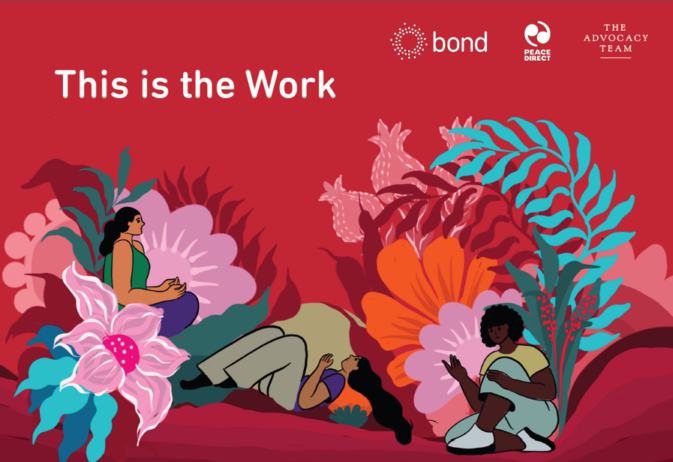Nine ways to make the most out of social media as a small NGO
We are all aware of the transformative impact that social media has had on the way we operate, both as individuals and as organisations, over the past two decades.
The potential value that social media offers to charities is huge, and NGOs continue to grasp the opportunities it provides. We use it as a cost-effective way to promote awareness of our brands, engage directly with supporters and share stories about the impact of our work. But in the vast and rapidly evolving online world, we are constantly grappling with the challenges that come with these opportunities.
As a small NGO, it may feel as though there aren’t enough resources available or hours in the day to get the most out of social media. You may find yourself disheartened and spending huge amounts of energy trying to keep up with changes and fast-moving trends to no avail.
As we do our best to navigate its complexities, the key is to focus on using social media in a way that delivers the highest return for your time and effort.
Here are nine simple ways to make the most out of social media as a small NGO:
1) Create a strong social media strategy
Taking the time to create a solid social media strategy will make it easier to focus on achieving your objectives day-to-day, avoiding the constant cycle of experimentation. Here are some things to consider:
- Link your social media strategy to the overall strategic plan of the organisation and bring relevant colleagues into the conversation. This will help you to ensure that you represent all relevant areas in your comms
- Be specific with your goals – think S.M.A.R.T (specific, measurable, achievable, relevant and time-bound)
- Map your key audiences, including how and where they are most likely to engage with your content
2) Choose your platforms wisely
It can be tempting to jump straight on the latest trends, but just because your peers have started using TikTok doesn’t necessarily mean it’s right for your organisation.
Knowing your audience is fundamental to successful communication. Who are you trying to reach with your social media? Are you targeting existing supporters, potential new supporters or other stakeholders?
Rather than spreading yourself thin across every social media platform, try focusing your energy and resources on a select few platforms where your intended audience already spends their time.
Research shows that, worldwide, most Twitter users are between the ages of 25-34 (38.5% of all users), followed by 35-49 year-olds (20.7%); almost 60% of LinkedIn users are 25-34 years old; and similarly users aged 25-34 make up the largest audience on Facebook (24.5%), followed by 35-44-year-olds who make up 18.7% of users. So, social media is a useful way to reach younger supporters.
But you should also be flexible. If you have found that you get lots of engagement on Instagram, but Twitter does little for you, then focus more on what works for you.
3) Build an online presence
If someone hears about your organisation and wants to find out more, the first place they look will probably be online. So, it’s important you make yours easy to find. Google your organisation – what comes up first? Does it represent you accurately?
Unlike large “household name” NGOs, small NGOs will likely find it easier to curate how they are represented online. Social media is a valuable and cost-effective way to make your message and impact known to potential new supporters or funders.
Try to produce up-to-date articles and resources and share posts that clearly explain who you are and what you do.
Subscribe to our newsletter
Our weekly email newsletter, Network News, is an indispensable weekly digest of the latest updates on funding, jobs, resources, news and learning opportunities in the international development sector.
Get Network News4) Set your tone of voice and be consistent
Pay attention to what you say and how you say it. Be consistent and always speak with a similar tone of voice across your channels, even if you have different people posting content.
Acronyms and jargon are rife in the international development sector – avoid them as much as possible and opt instead for simple and straightforward language. Be flexible if your message doesn’t seem to be landing, testing out what works best for you and your followers.
We have a language guide outlining the language Bond has agreed to no longer use in our communications.
5) Highlight your impact
Celebrate success publicly. Let your followers know you value their contributions and demonstrate how their support has made a difference.
If you can, let your supporters know how public donations in your most recent campaign helped and demonstrate the impact it had on the communities you work with. The online world can always do with some more positive news.
6) Share stories about people
People connect with other people.
Tell stories of the people and communities you work with. Where appropriate, share photographs that depict the people or places involved in your work. According to Twitter, posts that include images receive 35% more engagement.
NGOs often depend on the generosity of the people they work with to communicate the importance of their work, engage new audiences and raise more funds. It is vital that you consider contributors’ rights to participation and protection and ensure your content-gathering process is ethical. Bond’s People in the Pictures Group created a set of guidelines to support members with this.
Whether it is with your supporters, key partners, volunteers or fundraisers, relationships are an incredibly important tool and using social media to connect people is one of the most effective ways of building them.
7) Inspire action
What is the one action you want your supporters to take?
Try asking questions, running online polls or sharing concrete actions that your followers can take on social media to support your cause. Create sharable content that people will find valuable and ask your followers to re-post if they resonate. Run online fundraisers or campaigns. Encourage followers to call out decision-makers or put pressure on politicians via social media. Where appropriate, use polls to encourage interaction and gain interest.
Whether you are hoping for comments, shares, retweets or tags, create opportunities for supporters to engage – if you don’t provide a way to get involved, people won’t.
8) Measuring reach
So, hopefully, by now you know what you’re trying to achieve through social media, but have you established a way of measuring success? This can be tricky as there are so many variables and you will have to define what success means to you.
Do you want to grow your supporter base? Then track the number of followers and likes on your accounts and posts. Do you want to increase your engagement with existing supporters? Keep track of the comments on posts and direct conversations.
Do you want to guide people to register for an event? Or do you want people to re-tweet something? Keep track of which types of posts perform best over time and run with them. Lots of social media software measure this for you, but there is also analytics available on most social media platforms.
9) Make your communications accessible
As a small organisation, you want as many people as possible to be able to access and engage with your communications outputs. There are a few things to bear in mind to ensure your communications are inclusive, such as:
- When sharing an image, include image descriptions – either describe photos in the caption or add alternative text (alt-text) for people who are blind
- Use descriptive links. Instead of ‘click here’, try ‘register for X now’
- Use subtitles on videos for users who are deaf or hard of hearing, and for those who are scrolling social media in public with their sound off
- If using emojis, use them sparingly at the start or end of a sentence.
- Use camel case for hashtags – capitalise each word so that screen readers can read them e.g. #ThisIsCamelCase
Check out these posters on the dos and don’ts of designing for accessibility.
Remember – you may be small, but you are mighty
The good news is, being a small organisation opens a huge number of possibilities if you know how to use your size to your advantage. Social media isn’t just about budget or time, it’s about the strength of your ideas and the creativity with which you implement them.
Join our Small NGOs working group and develop links within the small NGO network, to share ideas, resources and good practices, and to provide peer support.
Category
News & Views



